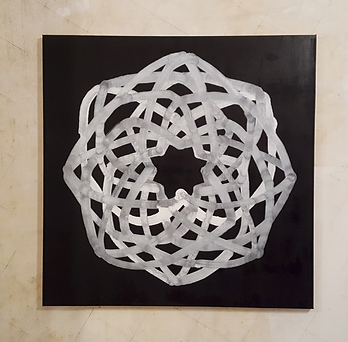Marie Cloquet
TRAVELING LIGHT
08/09/2019 - 20/10/2019
Marc Rossignol
Synchrone
Opening Sunday 9 September 2018
Marc Rossignol
Synchrone
Opening Sunday 9 September 2018
Marc Rossignol
Synchrone
Opening Sunday 9 September 2018
Marc Rossignol
Synchrone
Opening Sunday 9 September 2018
Herman Van Ingelgem
Foreign Bodies & Protheses
06/09/2021 - 17/10/2021
Buro 'Jackie'
"The founders and first members of the Royal Society demanded strict adherence to the ‘manner of discourse', the language used to report research and theory. (...) The members were asked to use concise and simple language, purified of the ‘trick of Metaphors' (...), striving against imagery in science and the ‘mists and uncertainties’ this imbues.” (1)
In the seventeenth century, the Royal Society of London considered that the Empire could only reflect itself truthfully if language was used in its most literal form.
The idea is attractive; one might desire, wish or even agree that it is so. Of course, we know metaphors help advance (scientific) thinking, that many objects and processes cannot be described without imagery, and that by replacing them with a concrete, visual picture, the structure and function of abstract concepts or terms are (more easily) understood. However, the metaphor used in this manner, as an instrument to introduce new ideas or raise new questions, also demonstrates a shadier side. A metaphor creates new meaning, by accentuating certain associations, while eliminating others; thus illustrating a potential for dogmatic use. The use of sports- and game metaphors in political rhetoric, the use of apocalyptic metaphors during weather reports, or metaphors of biology to describe technology or the economy (or vice-versa), the physiology of world issues and power - to name but a few examples of the discourse which invades our everyday lives, by means of continuous media reporting. This discourse calls for a clear language, a literal language, a 1:1–relation, thing-to-thing, a striving towards regular breathing, a univocal metal taste, as a continuously drier Japanese sake betrays its earlier sweetness. One might desire, wish or even agree that it is so.
I situate the work of Stefaan Dheedene within this desire. It is the desire itself, or perhaps the agreement that characterizes his work. Nevertheless, this desire is only a guiding principle, a concentration seeking no definitive statement, making no decision. Dheedene de-metaphorises language by withdrawing from these objects, their expressive, explicitly visual characteristics; presenting the images as singular detached entities. In splendid isolation. Leaving the language itself, in peace. As such, he delivers a sharp insight in the objects and images themselves. That they are not guilty of the dogmatic use of the metaphor themselves, merely the decision to use them in particular contexts. The objects that Dheedene presents are, for that reason, as in a Gestält, simultaneously schematic and recognizable. They suggest a hallucination or, more pleasantly, a trompe-l'oeil (2). In this sense, one should try to make a description of Dheedene’s work. What seems easy at first becomes extremely difficult, demanding either an exhaustive explanation or a large poetic agility (3). The work bridges the chiasmus between elements of the inconceivable and those of the unpronounceable. It is powerful work because it is an intervention of the moment upon which the metaphorical analogy is formed or recognized and thus, unmasked.
The paper had a voucher – valid only on Saturday the 8th of May – with which a discount (49€ instead of 59,99€) could be obtained when purchasing a piece of furniture. A piece of furniture, which consisted of six trays on a construction of tubes, on small wheels: so- called computer furniture. I wasn’t struck so much by the object, trying to achieve practical use of a PC, I was struck by its name: Buro ‘Jackie’.
Francis Denys
(1) D. Draaisma, De metaforenmachine. Een geschiedenis van het geheugen, Groningen, Historische Uitgeverij, 1995, pp. 62-63.
(2) For a review, see: Francis Denys, Trompe-l'oeil: de witte en de zwarte zijde van het oogbedrog, in Nieuw Tijdschrift VUB, jg. 8, nr. 3 (december 1995), p. 258-266.
(3) An excellent example can be found in the text by René Bijnens: Stefaan Dheedene, een afdaling, in Netwerk handleiding 02-03, Aalst, Netwerk, 2003, p. 5.12-5.13.
.png)
.png)


